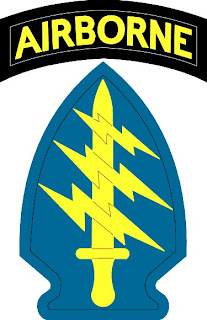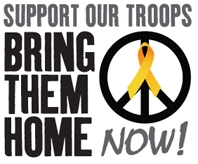Another Fine Mess
The report on terrorist financing obtained by the New York Times gets some details which the press has widely overlooked right. The report states, "Sources of terrorist and insurgent finance within Iraq--independent of foreign sources--are currently sufficient to sustain the groups' existence and operations." Correct--terrorists and insurgents are not necessarily the same animal.
The report continues, the groups within Iraq may be so flush they "have surplus funds with which to support other terrorist groups outside of Iraq." It is estimated that the Iraqis can fund a year of reistance at just over $200 million, less than what it costs the Pentagon (i.e., the U.S. taxpayer) to cover a day of combat operations in Iraq. Terrorism is cost-effective.
The Times article implies a wide base of support for the terrorist and insurgent groups, as the reported level of funding would not be so high if they lacked this. This fact does not leave one feeling warm and fuzzy.
These groups will have three aims:
Terrorist and insurgent groups are clearly criminal enterprises that can most effectively be countered through thorough intelligence and police functions. Addressing terrorist groups with military power is like killing a fly with a baseball bat, and our military campaign in Iraq is like squashing a ball of mercury--you break it up, but now you've got 10 balls of mercury. After reading this article it is clear that the problems facing the U.S. in Iraq are much more extensive than officially recognized or conveyed to the taxpayers.
The administration consistently claims that 10,000 insurgents are fueling the violence in Iraq. The same obfuscation is put forth to explain ongoing conflict in Afghanistan.
Let's deconstruct that 10,000 figure. For argument's sake only, I'll accept this estimate. This means 10,000 military-aged, trained and hardened fighters form the core of the resistance in Iraq. Forget the terms terrorist or insurrectionist--let's just call them active shooters. These personnel will fight and die for the organization. They are the cutting edge of the blade.
To support the shooters will be a ratio of at least 10:1 to 100:1 passive supporters. These members provide cover, safe haven, reconnaissance, transport, food and money, if necessary. The ratio in the U.S. Army can be 15:1 support-to-shooter ratio. I'm comfortable applying that ratio to the Iraq and Afghanistan resistance movements.
Therefore, 150,000 people provide passive support. Now we're up to 160,000 resistance personnel. This is no longer a trivial number. Every time the U.S. military conducts operations that kill, injure or insult indigenous personnel, this number will grow. I am using minimum figures to illustrate this concept.
Passive support for the resistance could be something as simple as looking the other way. There are myriad ways to support the movement without actually getting criminally involved. Once a person commits a criminal act for the group, however, the crossover from passive to active support occurs. The willingness to commit violence completes the transition to active shooter.
Thus it is that the groups thrive, prosper and grow. All this is accomplished without yellow magnetic car stickers or flag lapel pins. (As an aside, I am impressed by the pragmatism of the magnetic yellow ribbons; living in a college town, I also witness the football team's magnetic stickers which go on the fancy SUV's for the weekend, but can be so easily removed after game day. They come off more quickly after a losing weekend; even team loyalty has its limits.)
Now for the rest of the Iraqi population. Since over 60% of all Iraqis polled believed it's o.k. to kill Americans, we can see where their support will fall. In all, it's pretty dismal if one is willing to truthfully assess the scenario.
For whatever reason, the U.S. consistently tried to portray a low level one terrorist threat as a full-blown military threat to America. It just wasn't so. Now, the administration--or more precisely, its military personnel--sits in a hornet's nest of its own unleashing. I have the unfortunate image of a Laurel and Hardy skit: and here's another fine mess they've gotten us into. Unfortunate because the results of this scenario are as predictable, yet far from comic.
The intial violence--Al Quaida's attack on 9-11--was a terrorist undertaking. Al Quaida was a level one terrorist threat. According to Maoist theory, terrorist/insurrectionist groups may grow and progress into level two threats and beyond, theoretically evolving into an end stage of full-blown, military-type operations. At this point, a transformation will have occurred, and at this time a military response finally becomes appropriate.
But to date, I cannot recall any terrorist organization that has made this complete transition; therefore, my position remains that the U.S. reaction is disproportionate and wildly overblown.
The French defeated the Algerian seperatists, but they lost the war. The U.S. defeated the VietCong, but lost the war. The separatist movements coordinate activities and gain a preponderance of support from the population; this is also happening in Iraq, forcing U.S. forces to ratchet up the violence to suppress the increased resistance operations. This in turn will win more supporters for the resistance, and eventually, the U.S. will be forced to withdraw. I call this the dance of death.
Why are U.S. military personnel being killed and maimed when the suffering will not change the inevitable, inexorable outcome?
The report continues, the groups within Iraq may be so flush they "have surplus funds with which to support other terrorist groups outside of Iraq." It is estimated that the Iraqis can fund a year of reistance at just over $200 million, less than what it costs the Pentagon (i.e., the U.S. taxpayer) to cover a day of combat operations in Iraq. Terrorism is cost-effective.
The Times article implies a wide base of support for the terrorist and insurgent groups, as the reported level of funding would not be so high if they lacked this. This fact does not leave one feeling warm and fuzzy.
These groups will have three aims:
- Strategic and tactical objectives
- Recruitment
- Finance
Terrorist and insurgent groups are clearly criminal enterprises that can most effectively be countered through thorough intelligence and police functions. Addressing terrorist groups with military power is like killing a fly with a baseball bat, and our military campaign in Iraq is like squashing a ball of mercury--you break it up, but now you've got 10 balls of mercury. After reading this article it is clear that the problems facing the U.S. in Iraq are much more extensive than officially recognized or conveyed to the taxpayers.
The administration consistently claims that 10,000 insurgents are fueling the violence in Iraq. The same obfuscation is put forth to explain ongoing conflict in Afghanistan.
Let's deconstruct that 10,000 figure. For argument's sake only, I'll accept this estimate. This means 10,000 military-aged, trained and hardened fighters form the core of the resistance in Iraq. Forget the terms terrorist or insurrectionist--let's just call them active shooters. These personnel will fight and die for the organization. They are the cutting edge of the blade.
To support the shooters will be a ratio of at least 10:1 to 100:1 passive supporters. These members provide cover, safe haven, reconnaissance, transport, food and money, if necessary. The ratio in the U.S. Army can be 15:1 support-to-shooter ratio. I'm comfortable applying that ratio to the Iraq and Afghanistan resistance movements.
Therefore, 150,000 people provide passive support. Now we're up to 160,000 resistance personnel. This is no longer a trivial number. Every time the U.S. military conducts operations that kill, injure or insult indigenous personnel, this number will grow. I am using minimum figures to illustrate this concept.
Passive support for the resistance could be something as simple as looking the other way. There are myriad ways to support the movement without actually getting criminally involved. Once a person commits a criminal act for the group, however, the crossover from passive to active support occurs. The willingness to commit violence completes the transition to active shooter.
Thus it is that the groups thrive, prosper and grow. All this is accomplished without yellow magnetic car stickers or flag lapel pins. (As an aside, I am impressed by the pragmatism of the magnetic yellow ribbons; living in a college town, I also witness the football team's magnetic stickers which go on the fancy SUV's for the weekend, but can be so easily removed after game day. They come off more quickly after a losing weekend; even team loyalty has its limits.)
Now for the rest of the Iraqi population. Since over 60% of all Iraqis polled believed it's o.k. to kill Americans, we can see where their support will fall. In all, it's pretty dismal if one is willing to truthfully assess the scenario.
For whatever reason, the U.S. consistently tried to portray a low level one terrorist threat as a full-blown military threat to America. It just wasn't so. Now, the administration--or more precisely, its military personnel--sits in a hornet's nest of its own unleashing. I have the unfortunate image of a Laurel and Hardy skit: and here's another fine mess they've gotten us into. Unfortunate because the results of this scenario are as predictable, yet far from comic.
The intial violence--Al Quaida's attack on 9-11--was a terrorist undertaking. Al Quaida was a level one terrorist threat. According to Maoist theory, terrorist/insurrectionist groups may grow and progress into level two threats and beyond, theoretically evolving into an end stage of full-blown, military-type operations. At this point, a transformation will have occurred, and at this time a military response finally becomes appropriate.
But to date, I cannot recall any terrorist organization that has made this complete transition; therefore, my position remains that the U.S. reaction is disproportionate and wildly overblown.
The French defeated the Algerian seperatists, but they lost the war. The U.S. defeated the VietCong, but lost the war. The separatist movements coordinate activities and gain a preponderance of support from the population; this is also happening in Iraq, forcing U.S. forces to ratchet up the violence to suppress the increased resistance operations. This in turn will win more supporters for the resistance, and eventually, the U.S. will be forced to withdraw. I call this the dance of death.
Why are U.S. military personnel being killed and maimed when the suffering will not change the inevitable, inexorable outcome?











4 Comments:
VERY good analysis. Hat off.
10000 local core fighters who have had three years of adaption to US strategy. And now the shias are getting restless. That is a scary mass. Since you obviously know what you are talking about, what is US military doctrine for massive attack by rockets? Cause the Mahdis, you dont mess with now, after Lebanon.
Martin,
I thank you for the compliment, since I know you are precise and discriminating.
As for rocket attacks, we're taught in the infantry that you must do a DIP (die in place). What else could you do short of having Scottie beam you up?
The rocket problem is doubly vexing when you note that U.S. facilities are nice, contained targets. The only tactic that could suggest would be counter-battery fire, which our artillery units are so proficient with. But the problem is that most artillery types are currently being used as road guards, etc.
I think of the rocket threat every time we rattle our sabres vs. Iran. They are really the Rocketman (sorry, Elton).
I thought about your comment, and you know, what I wrote was basic knowledge to me, as I taught the stuff to DoD and Army classes in an "intro to terrorism" course. I almost felt it wasn't necessary to say it.
But you made me realize that the public isn't getting this info. from the military or the press, and they both know better. I guess by keeping the topics emotionally laden and knee-jerk, it's much easier to keep the taxpayers in an unrealistic state of fear. Jim
The lack of military precise comment in the US-main-stream is very strange, You would have thought each paper would have an expert on its staff. Over here its a bit better, we have limited freedom of speech for serving personell, so that there are both pro and con military voices. Being a country of 4 million has its advantages.
As for Irans missiles, see http://en.wikipedia.org/wiki/Shahab-3 for a good starting point. Bet your ass they are working overtime on cluster-delivery packages... Since Irans forces are primarily defensive in doctrine, they have a heavy local strike-capacity, and now that they have developed spotter-drones AND have local forces, they will be pretty well effective against stationary targets in Iraq. They have some rather hardcore surface to sea-missiles as well, http://en.wikipedia.org/wiki/Kowsar isnt very detailed but indicates a decent strike-radius against the fleet. And Iran is BIG and not flat desert.
(BTW, good story: our top norwegian brass & the top buerocrats were being shown round Kabul airport, wich were taking over. The US colonel tells with enthusiasm that they hire locals to shoot and kill the opposition at their own discrimination, saying quote "And thats fine by me!", excpecting applause. Total silence, followed by a question from a majorgeneral of the Airforce concerning tolerance of non-legal executions and the Geneva conventions. Very embarassed US colonel. *grin*)
Thanks for the references Martin.
I am aware of the Iranian capabilities. Thanks again.
Post a Comment
<< Home